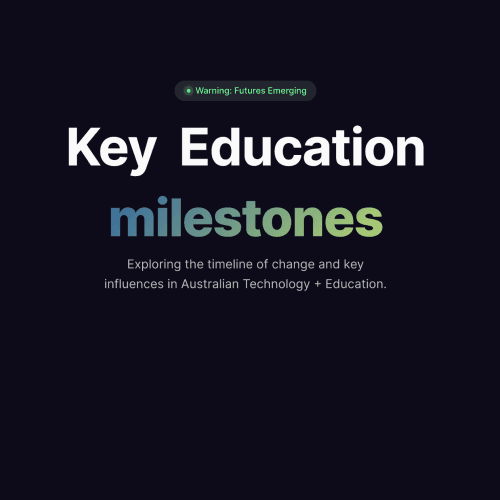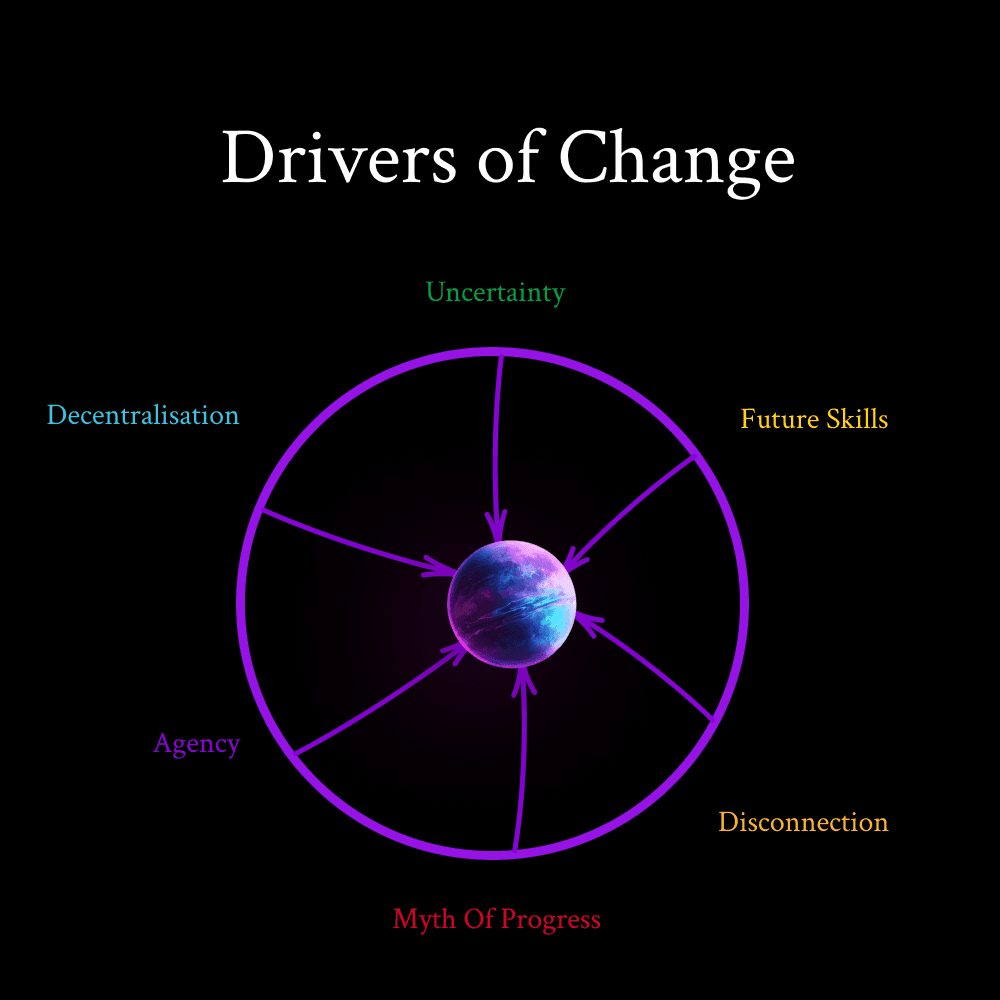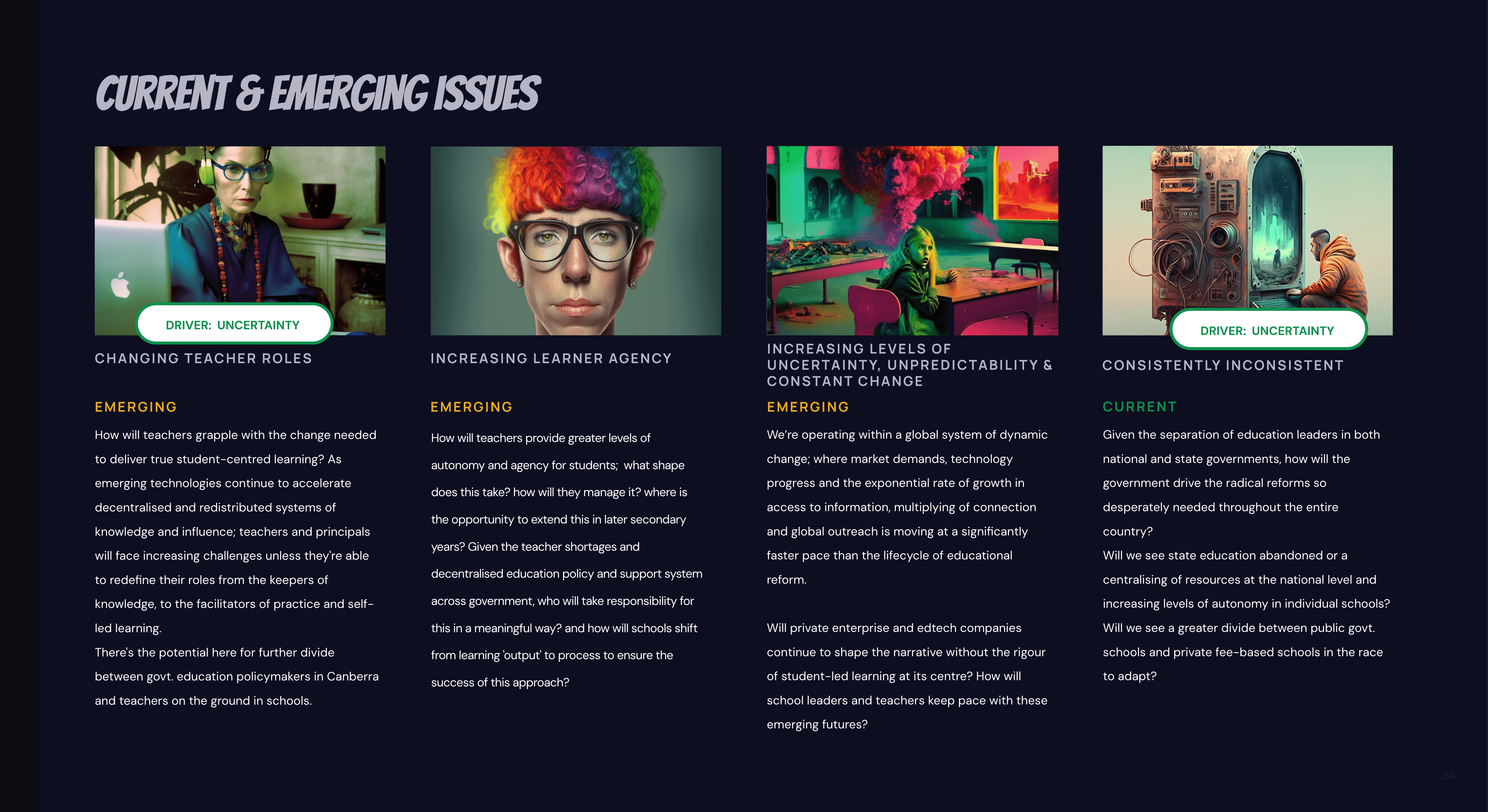CLIENT
This research is being conducted to assist the Head of Preparedness and Response, at the fictional Australian Secondary School Technology Network (ASSTN) to explore how they might leverage the real potential of pedagogical technology in the future Australian secondary school learning environment.
GEOGRAPHIC SCOPE
The scope for this project focuses on the Australian secondary school market, but given the global nature of these technologies, we will look outside of Australia as part of our horizon scanning process.
DOMAIN DEFINITION
The accelerating pace of disruptive technology, exponential increases in generated knowledge and the urgent need to prepare students for a dynamic and non-linear path to future work; means we need to radically accelerate the necessary shift from a teaching to a learning paradigm, with a profound focus on 21st century skill building and the technologies which enable them. This domain focuses on the potential pedagogical role technology; and its potential place in the future Australian secondary school learning environment.
For those outside of Australia: secondary school refers to grades 7 to 12,
KEY LINES OF ENQUIRY
How will future technology experiences transform pedagogies?
What inherently human challenges does this technology surface and how might we meet them?
Where is the key tension in the alignment of scaleable pedagogical frameworks with non-linear outcomes?
How might an increasing future reliance on technology, shape our understanding of expertise, learning and shared value in the future?
CURRENT ASSESSMENT
Secondary school students are preparing for a work future within a post-industrialised context where their future employment will be radically different from previous generations (and most likely, radically disconnected) from the school system within which they are being prepared. The critical question we're exploring in this project is - what future role might pedagogical technologies play within the Australian secondary school system?
The challenge here in this project, is that at its core, it is not a strictly technological problem. It's helpful to think of the education system as a complex adaptive system, and to identify the unresolved root challenge which defines the context for this technology question.
How might we reconceptualise education to prepare our students for the future?
And now we can see that technology in this context, is the proxy for a much bigger question.
FRAMING THE CURRENT ASSESSMENT
Given the nature of this project is to explore the potential role of virtual technologies within the Australian secondary school space; and the complexity of exploring this question within the broader context of education as a complex adaptive system - let us frame this current assessment for clarity.
3 clicks in on Google will surface a myriad of superficial solves for the relationship between technology and education. In order to provide a rigorous and disciplined exploration of the future role of technology that is both possible and plausible; it’s critical that we focus on both the broader educational context and technology’s current placement within it. We do this to avoid emasculating the project challenge and further down the track, jumping to simplified scenarios which neither answer the challenge in a plausible manner, nor account for the complexity in solving it.
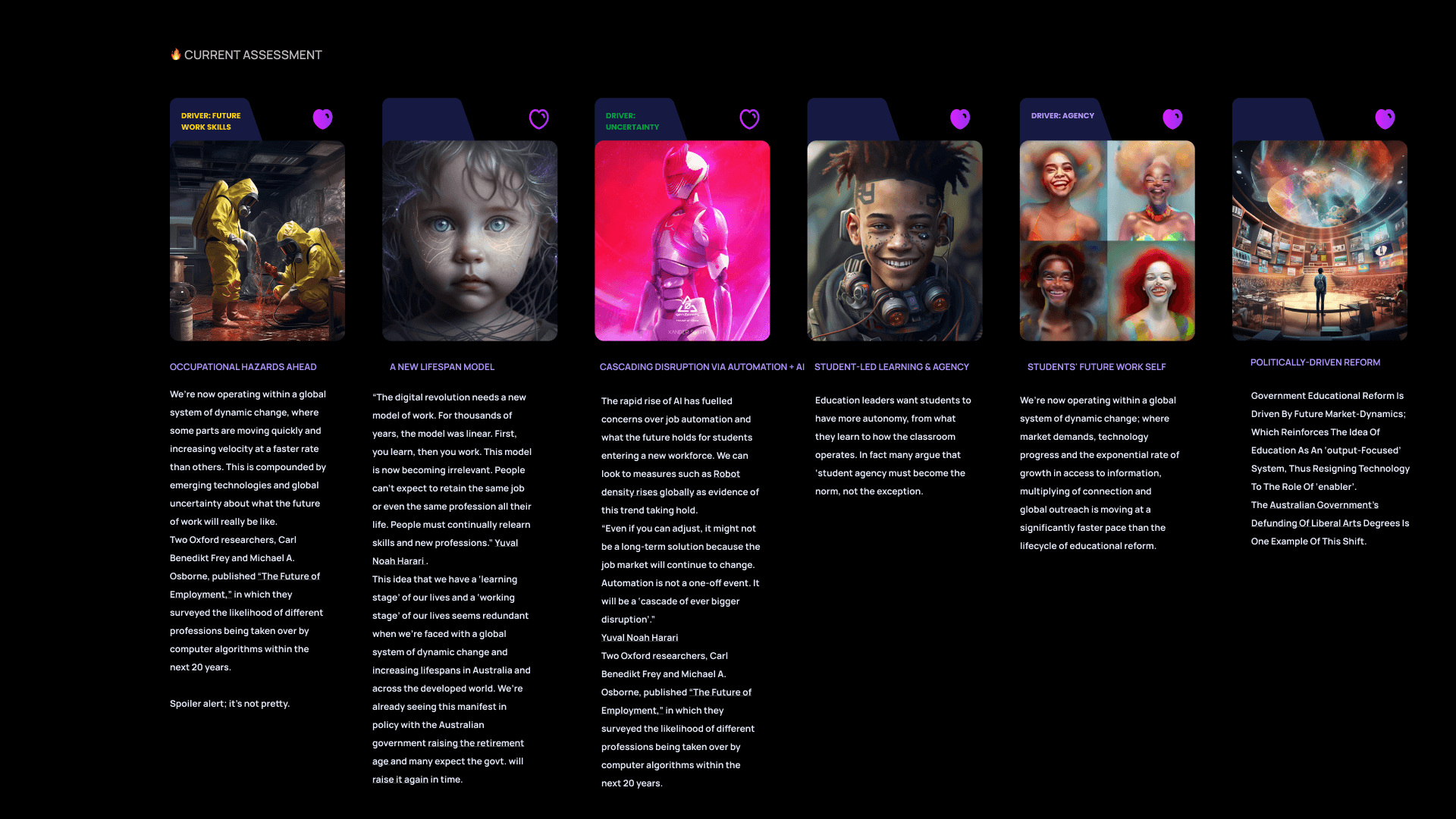
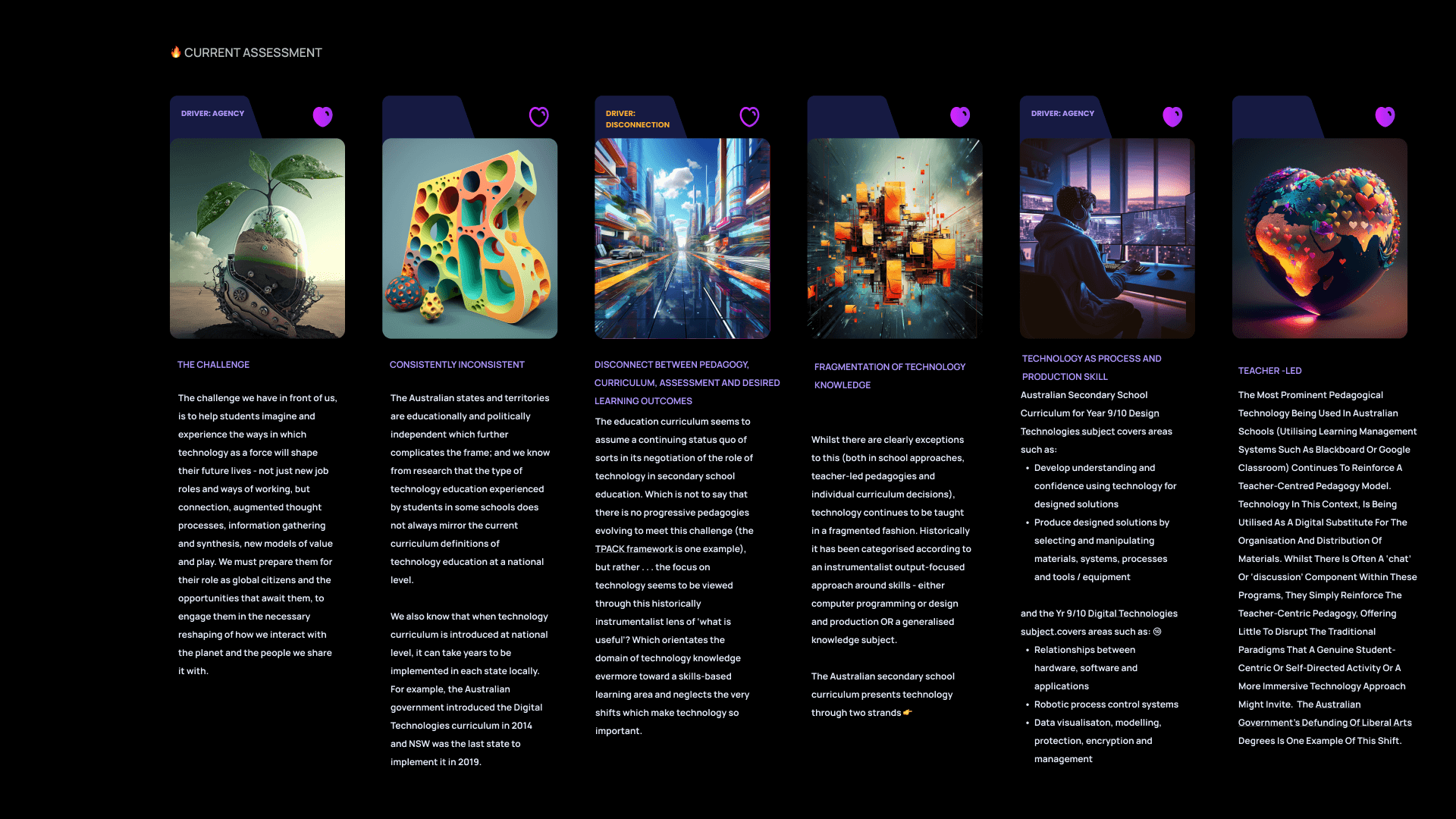
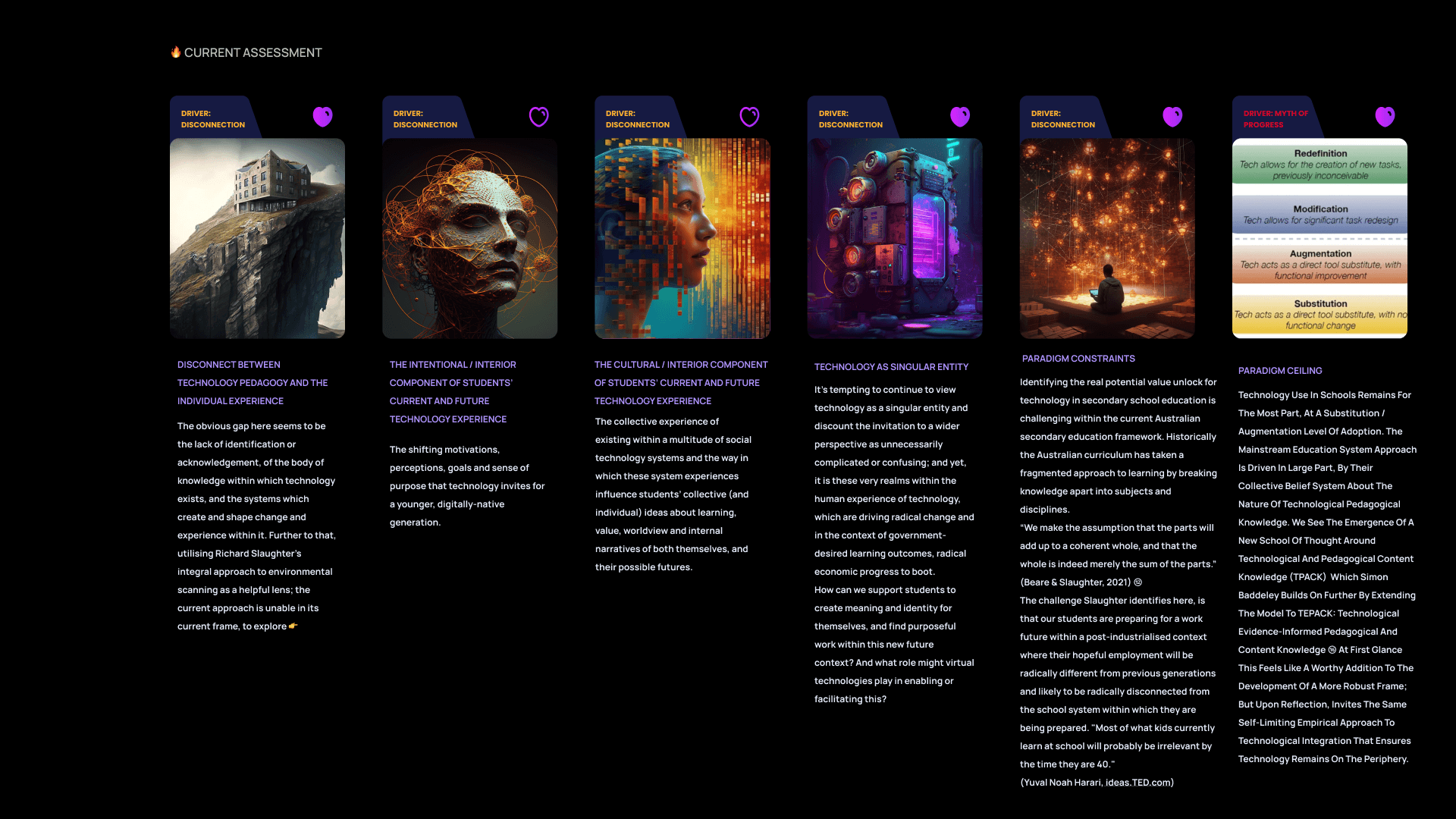
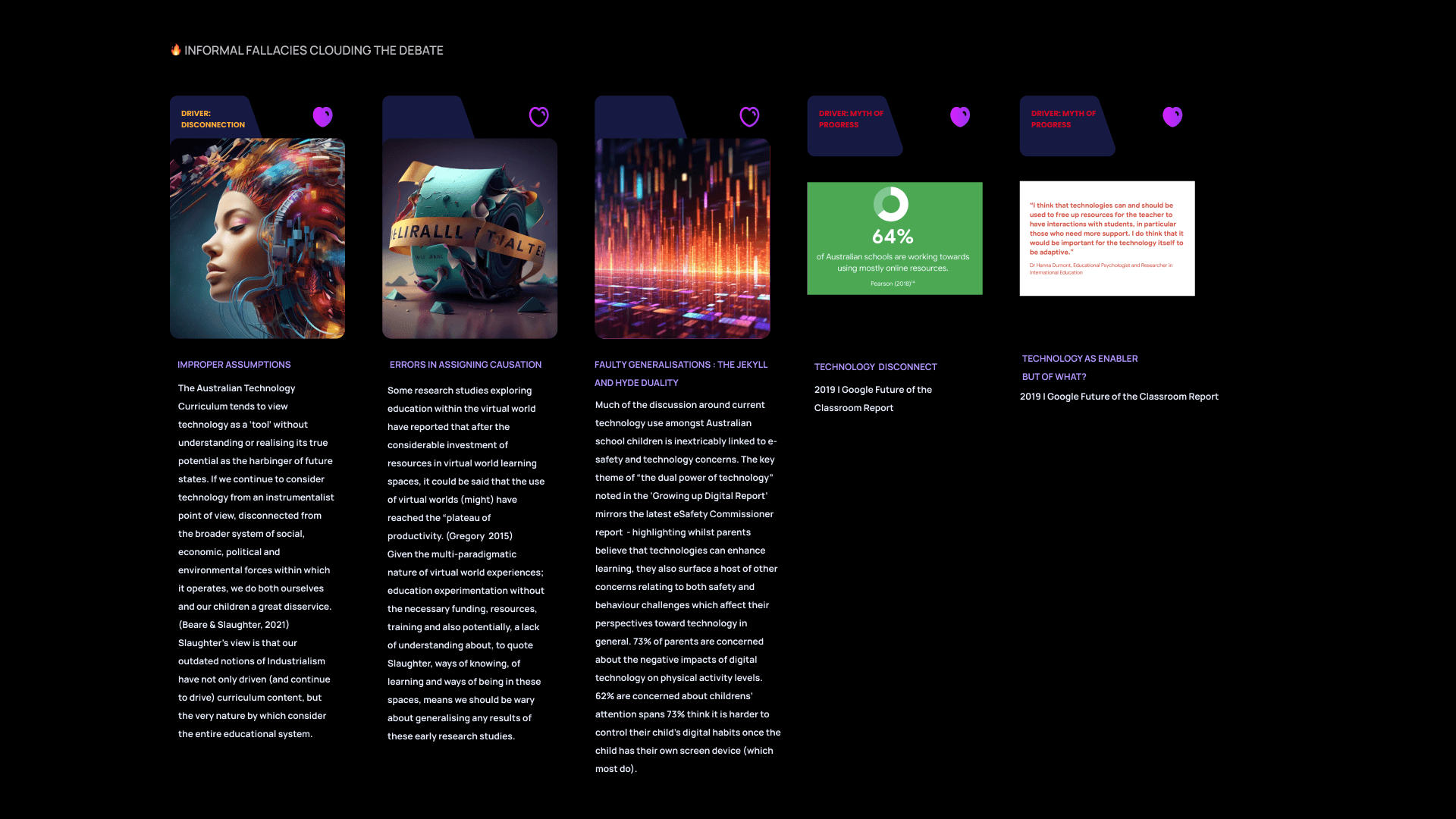
PARADIGM CONSTRAINTS
Identifying the real potential value unlock for technology in secondary school education is challenging within the current Australian secondary education framework. Historically the Australian curriculum has taken a fragmented approach to learning by breaking knowledge apart into subjects and disciplines.
“We make the assumption that the parts will add up to a coherent whole, and that the whole is indeed merely the sum of the parts.” (Beare & Slaughter, 2021) ⑫
The challenge Slaughter identifies here, is that our students are preparing for a work future within a post-industrialised context where their hopeful employment will be radically different from previous generations and likely to be radically disconnected from the school system within which they are being prepared.
"Most of what kids currently learn at school will probably be irrelevant by the time they are 40."
(Yuval Noah Harari, ideas.TED.com)
PARADIGM CEILING
Technology use in schools remains for the most part, at a substitution / augmentation level of adoption. The mainstream education system approach is driven in large part, by their collective belief system about the nature of technological pedagogical knowledge. We see the emergence of a new school of thought around technological and pedagogical content knowledge (TPACK) ⑮ which Simon Baddeley builds on further by extending the model to TEPACK: Technological Evidence-informed Pedagogical and Content Knowledge ⑯ At first glance this feels like a worthy addition to the development of a more robust frame; but upon reflection, invites the same self-limiting empirical approach to technological integration that ensures technology remains on the periphery.
The latest Campion report⑲ reinforces this limited perspective on technology's potential contribution stating that: 50% of Australian secondary schools are utilising both print and digital tools and resources and 30% of schools are looking to deepen their digital commitment.
92% use PDF textbooks or interactive textbooks
90% use digital learning software
INFORMAL FALLACIES CLOUDING THE DEBATE
IMPROPER ASSUMPTIONS
The Australian Technology Curriculum tends to view technology as a ‘tool’ without understanding or realising its true potential as the harbinger of future states. If we continue to consider technology from an instrumentalist point of view, disconnected from the broader system of social, economic, political and environmental forces within which it operates, we do both ourselves and our children a great disservice. (Beare & Slaughter, 2021)
Slaughter’s view is that our outdated notions of Industrialism have not only driven (and continue to drive) curriculum content, but the very nature by which consider the entire educational system.
ERRORS IN ASSIGNING CAUSATION
Some research studies exploring education within the virtual world have reported that after the considerable investment of resources in virtual world learning spaces, it could be said that the use of virtual worlds (might) have reached the “plateau of productivity. (Gregory et al., 2015) ⑰
Given the multi-paradigmatic nature of virtual world experiences; education experimentation without the necessary funding, resources, training and also potentially, a lack of understanding about, to quote Slaughter, ways of knowing, of learning and ways of being in these spaces, means we should be wary about generalising any results of these early research studies.
FAULTY GENERALISATIONS : THE JEKYLL AND HYDE DUALITY
Much of the discussion around current technology use amongst Australian school children is inextricably linked to e-safety and technology concerns. The key theme of “the dual power of technology” noted in the ‘Growing up Digital Report’ ⑨ mirrors the latest eSafety Commissioner report ⑱ - highlighting whilst parents believe that technologies can enhance learning, they also surface a host of other concerns relating to both safety and behaviour challenges which affect their perspectives toward technology in general.
73% of parents are concerned about the negative impacts of digital technology on physical activity levels.
62% are concerned about childrens’ attention spans
73% think it is harder to control their child’s digital habits once the child has their own screen device (which most do).
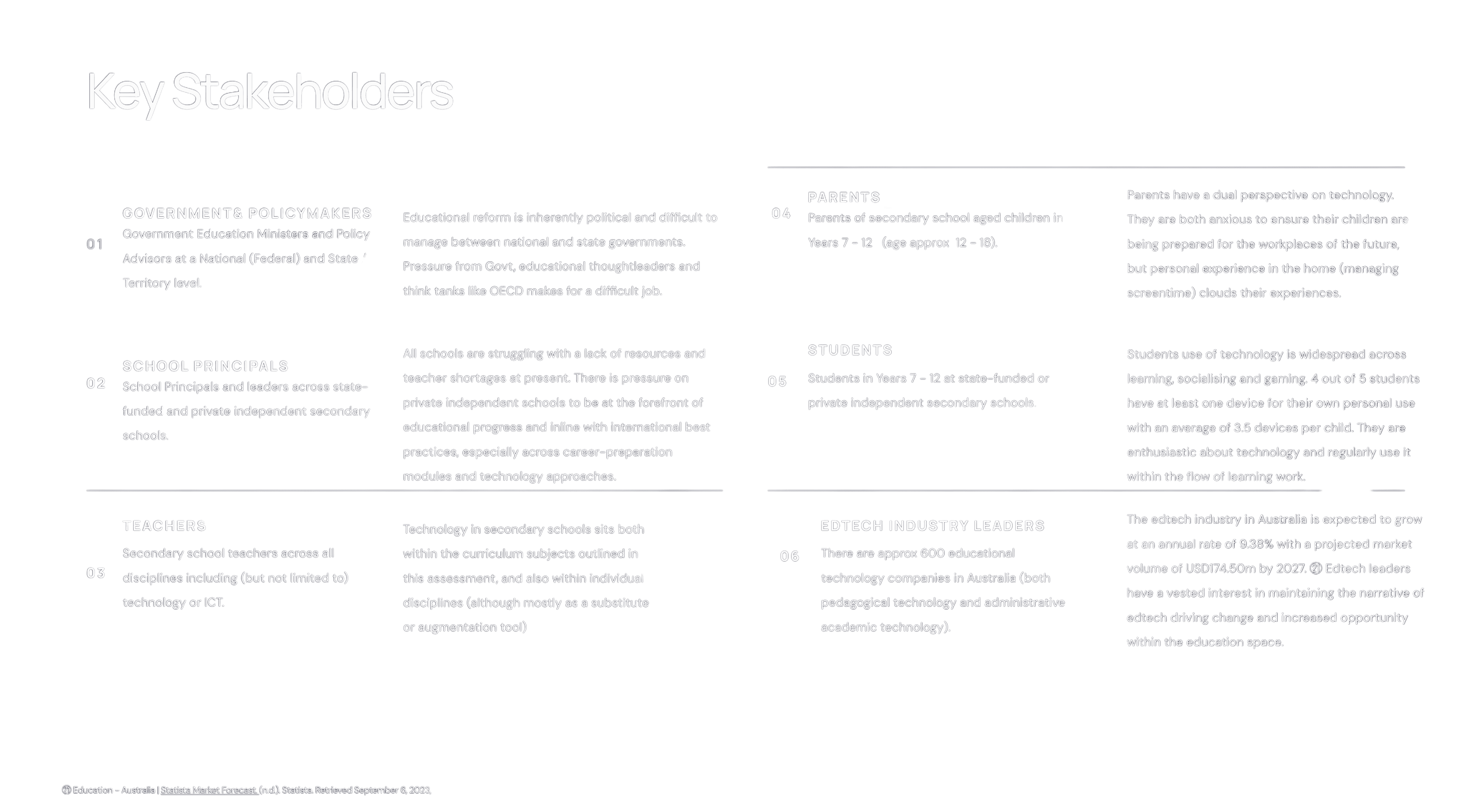
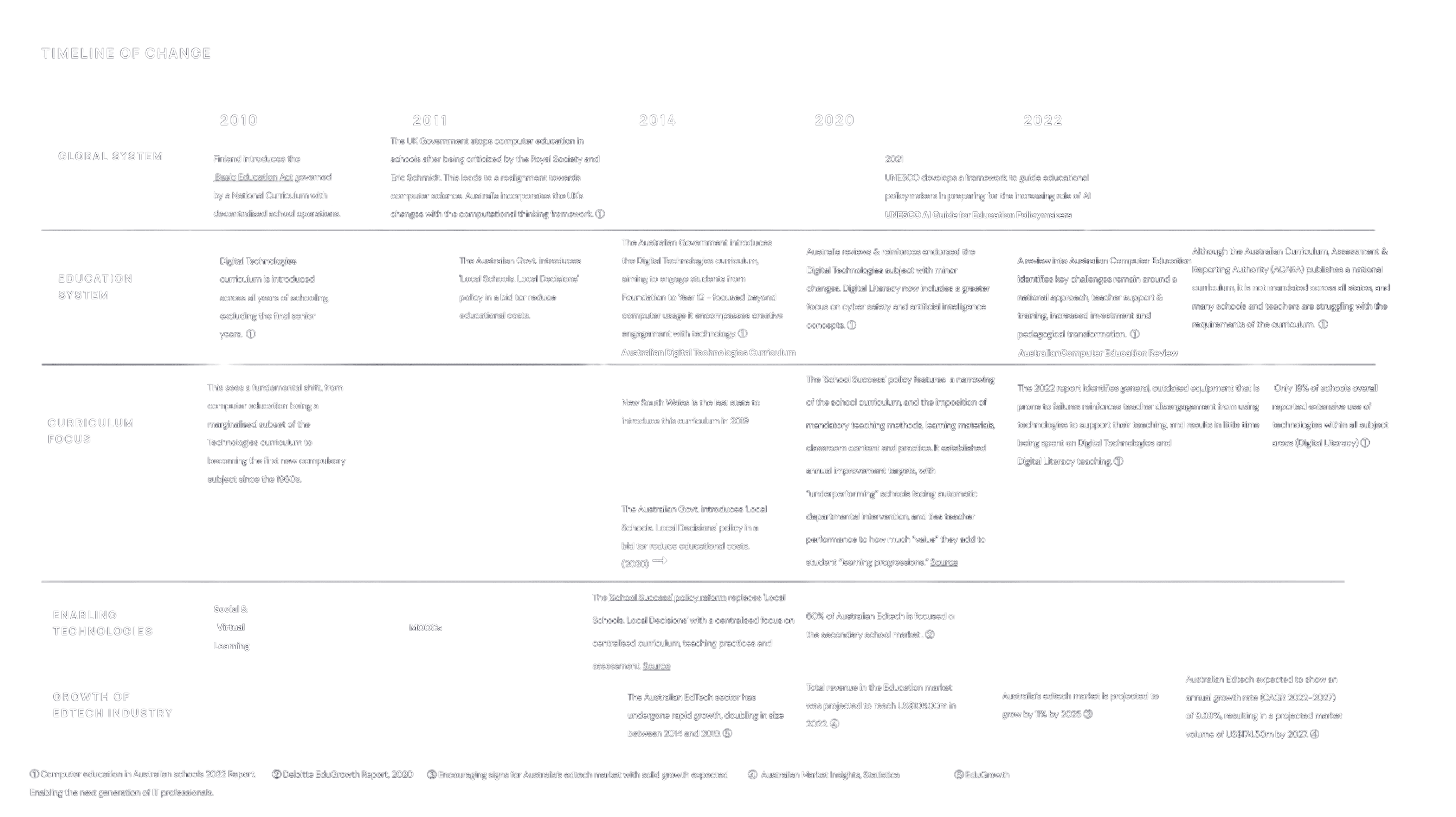
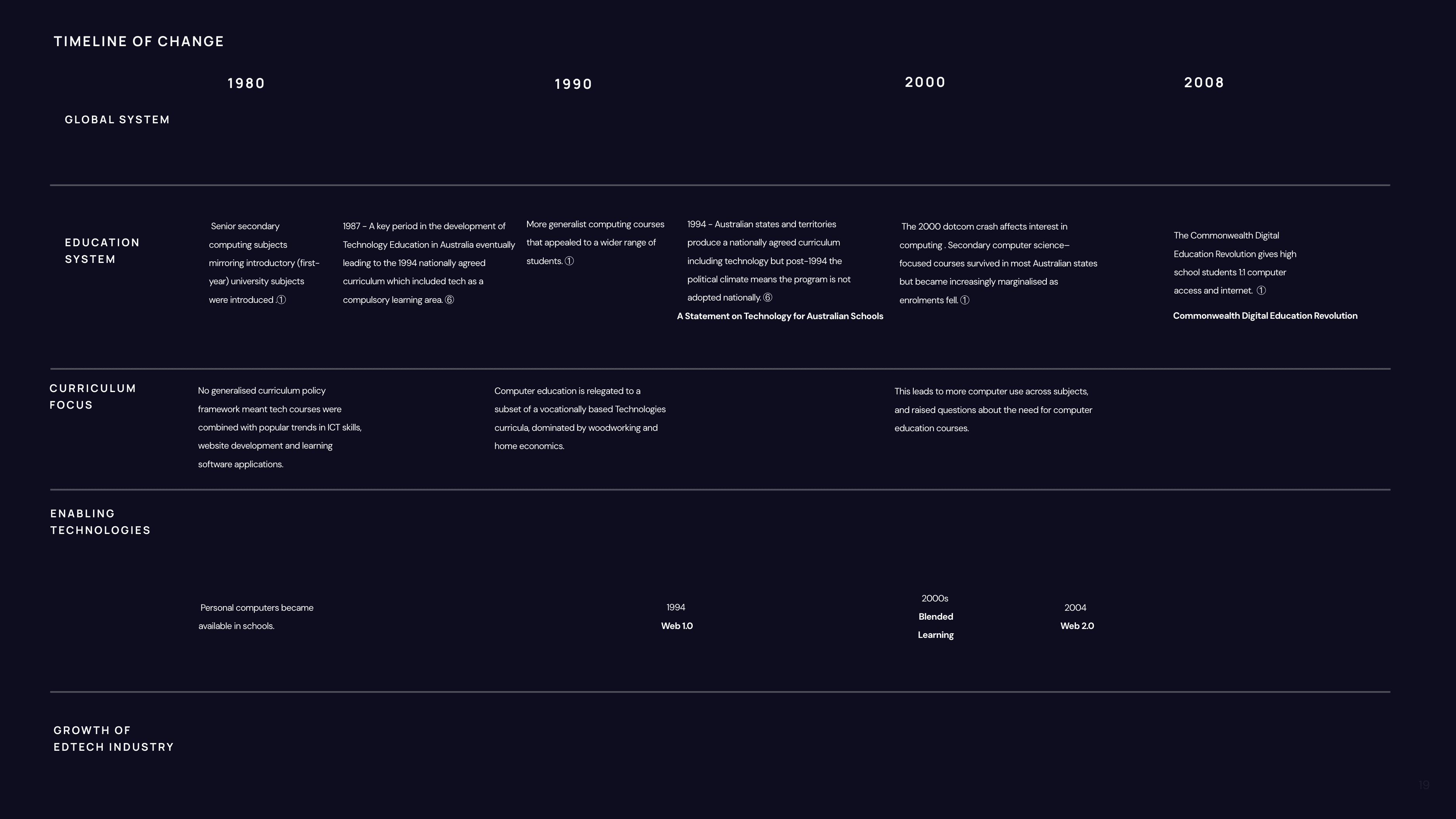
SOURCE REFERENCES
⑨ Growing up Digital Australia, Phase 2 Technical Report, 2021, UNSW Gonski Institute for Education
⑫ Beare, H., & Slaughter, R. (2021). Education for the Twenty-First Century. Routledge.
⑮ Australian Digital Technologies Hub
⑯ Edtech in the Classroom, Simon Baddeley, 2020
⑰ Gregory, Sue & Scutter, Sheila & Jacka, Lisa & McDonald, Marcus & Farley, Helen & Newman, Chris. (2015). Barriers and Enablers to the Use of Virtual Worlds in Higher Education: An Exploration of Educator Perceptions, Attitudes and Experiences. Educational Technology & Society. 18. 3-12.
⑱ Parenting in the digital age | eSafety Commissioner. (2022). ESafety Commissioner. https://www.esafety.gov.au/research/parenting-digital-age
⑲ The Digital Landscapes in Australian Schools 2023 Report, Campion Education
